I ordered my Tannoy Westminster Royal Special Edition loudspeakers on October 19, 2009. Tannoy built them, shipped them from Coatbridge, Scotland, and they arrived here at Jeff's Place on December 30, 2009.
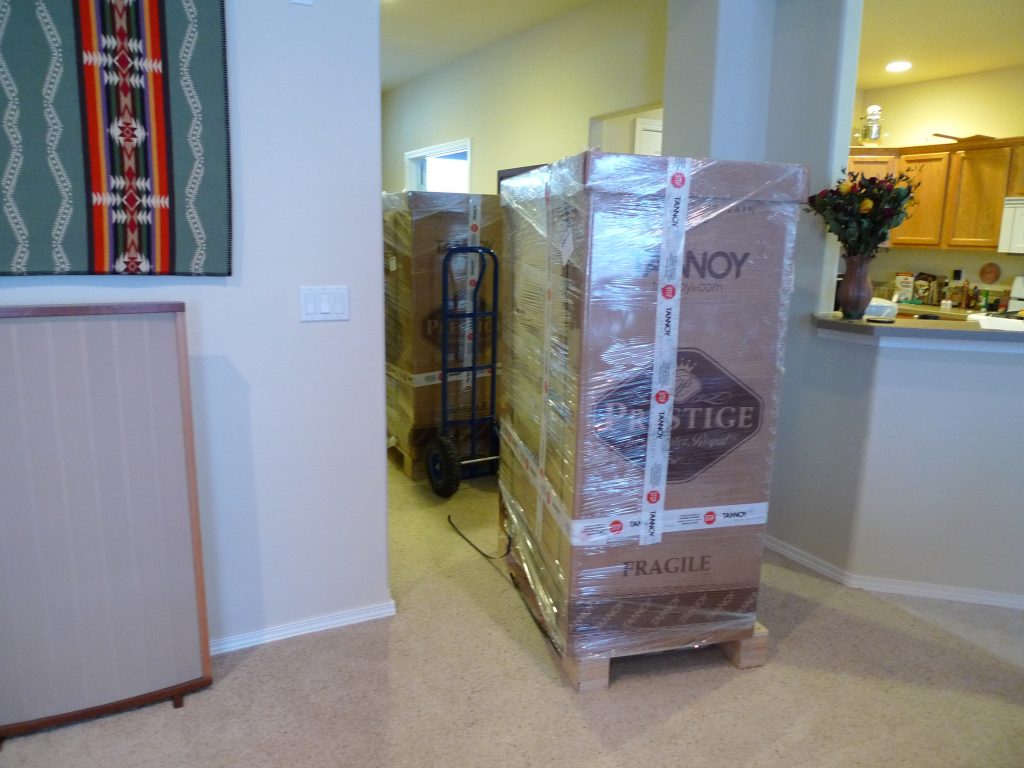
Tannoy Westminster Royal SE loudspeakers arrive at Jeff's Place on December 30, 2009.
That's knocking on the door of twelve years ago now!
Twelve years ago feels like a long time ago, and my world has changed a lot since I wrote about the West's for Positive Feedback in 2010 (HERE). In audio terms, very few components have stood the test of time in my life over that twelve years like the Westminsters have.
Tannoy Westminsters have changed somewhat over that time, and the latest versions circa 2021 are the Westminster Royal GR-OW, of which Tannoy says they have incorporated refinements into along the way to their current state.
Back when I bought my Westminster Royal Special Edition loudspeakers the retail price was $35,000 USD, which has now GR-OWN to $50,000 USD in 2021.
A quick calculation with an inflation calculator shows that $35,000 USD in 2009 dollars is $44,630 USD in 2021 dollars, so the price of the current Westminster Royal GR-OW loudspeakers has risen a bit more than inflation, but not remarkably so.
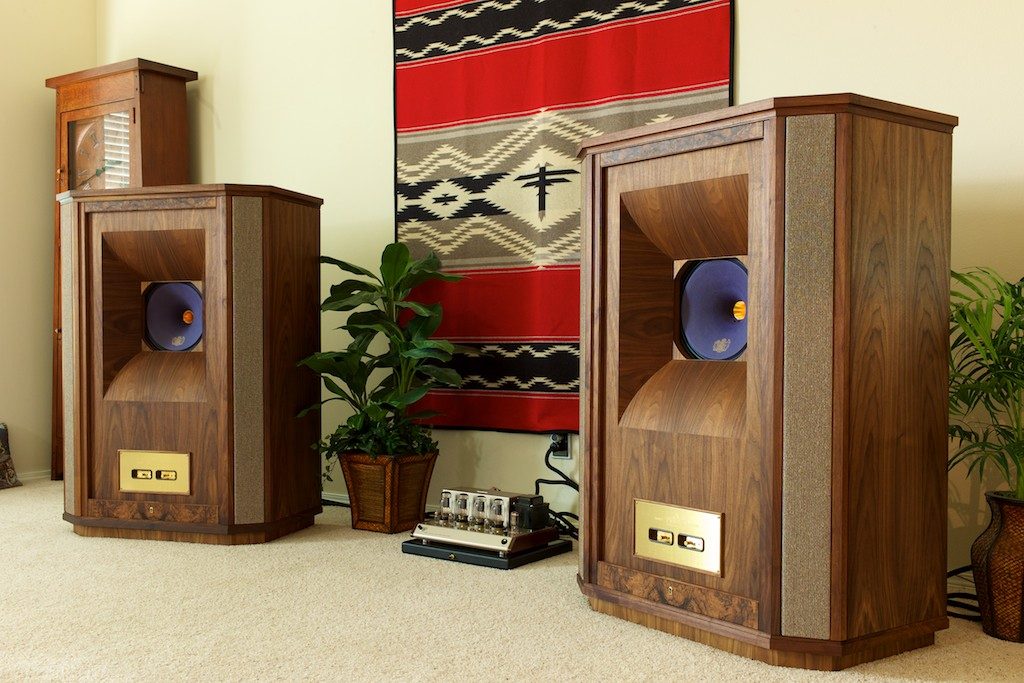
Tannoy Westminster Royal SE loudspeakers a few months after they arrived here at Jeff's Place.
I'm a regular bloke, not a CEO or a wealthy guy, that can spend $35,000 USD and not blink. I'm frugal, I pinch my pennies, watch my costs, save my money for a rainy day, and buying my Westminsters back in 2009 was about the equivalent of passing a financial kidney stone for me. It hurt!
Coming in third place to only my Toyota 4Runner and my house, my Tannoy Westminster Royal SE loudspeakers were the third most expensive thing I'd ever purchased in 2009, and they still are!
Now twelve years later, am I still glad I bought the Tannoy Westminster Royal Special Edition loudspeakers?
Emphatically yes! In terms of personal satisfaction, the pain of purchase has long passed, and I am more impressed now with my Tannoy Westminster Royal Special Edition loudspeakers than ever!
I'd been steadily enjoying my Tannoy Westminster Royal Special Edition loudspeakers when I met Frederik Carøe of Duelund Coherent Audio in 2013.

Duelund CAST crossovers for the Westminsters in 2013.
Frederik and I embarked upon the Duelund-Westminster Project in 2013 where we built custom outboard crossovers for the Westminsters using Frederik's top-of-the-line Duelund CAST components (HERE), and the performance gains for the Westminsters were staggering!
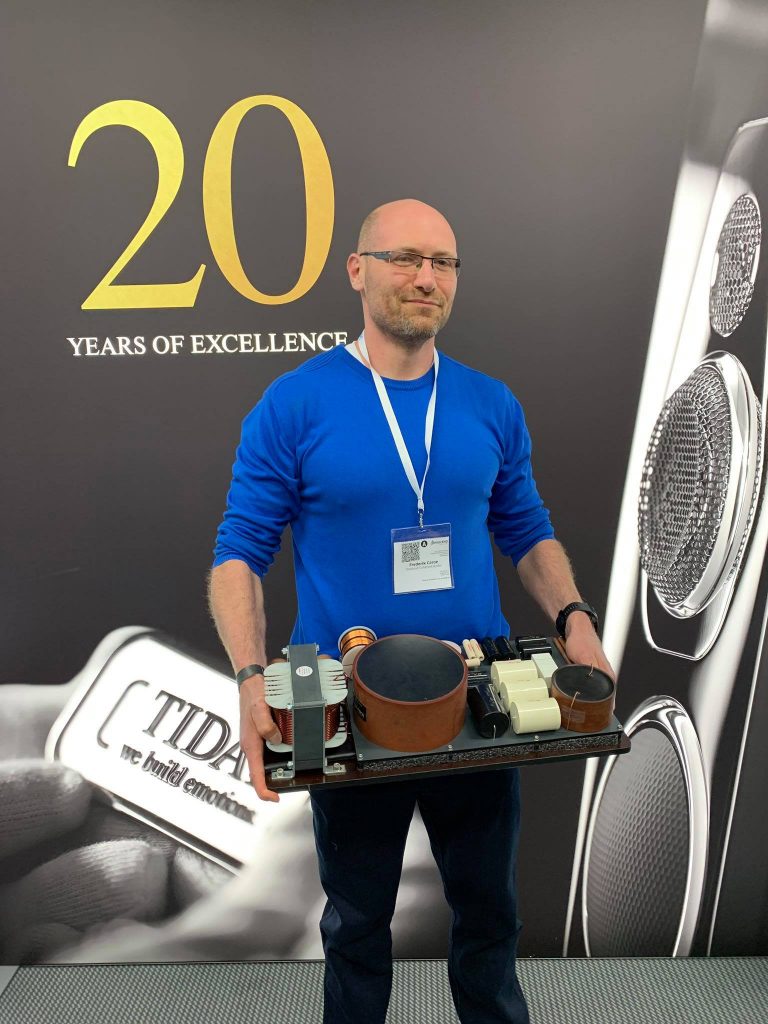
Frederik! I hope it's ok I borrowed your photo, Frederik!
The Duelund CAST crossovers were built as outboard crossovers so Frederik and I could try different Duelund components in them, which was a lot of audio fun.

Duelund CAST pure silver capacitors were used in the C1 positions of crossovers.

Duelund silver autotransformers were used in place of the stock Tannoy autotransformers.
The final iteration of the Westminsters' Duelund CAST crossovers used Frederik's pure silver Duelund CAST components in the high-frequency circuit, and provided a very deep glimpse into the performance of upstream components.
I've tried all of Duelund CAST capacitor variations - except for the new CAST tinned-copper capacitors - for the C1 position of the West's crossovers, and they were all splendid.
I've been listening to the Tannoy Westminster Royal Special Edition loudspeakers with their Duelund-Westminster Project crossovers now for over eight years, and I'm still as impressed with them as ever, and maybe even more so, as I swear that the Duelund CAST crossovers have continued to improve over time like a fine wine.
Other than the whimsical desire to try the latest tinned-copper versions of the Duelund CAST capacitors in the C1 position crossovers, my only other thoughts about the Duelund CAST crossovers have been related to investigating installing them inside the cabinets of the big West's to uncluttere my living room a little bit. That's it, as they're bloody brilliant crossovers!
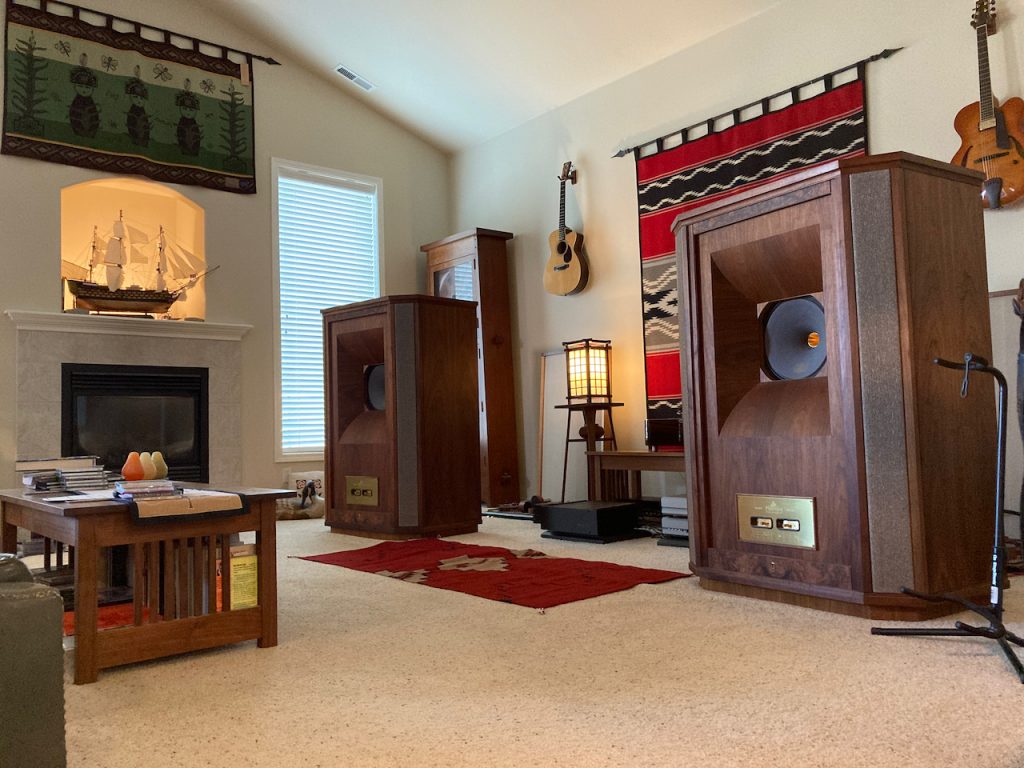
My Westminsters with First Watt and Pass Labs electronics.
I just did an amplifier listening marathon with the Pass Labs XA25, First Watt F8 and SIT-3, as part of the Positive Feedback review of the new First Watt F8 stereo amplifier (HERE). What a blast!
I have to pinch myself just to make sure I'm not dreaming, as listening to all those great solid-state amplifiers by Nelson Pass has really been a wonderful experience.
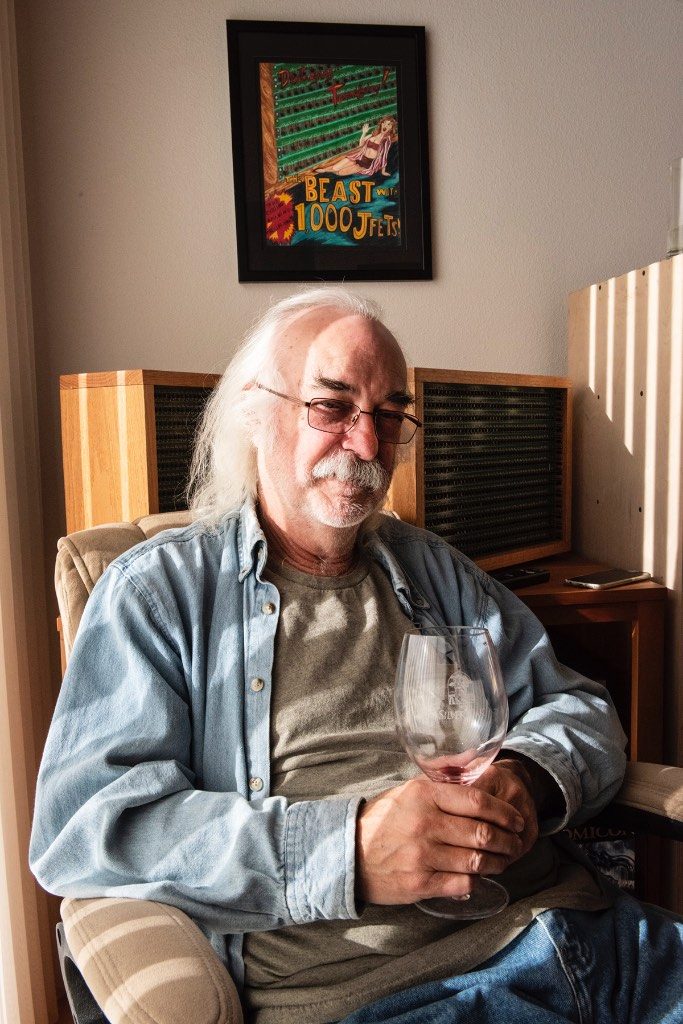
Nelson Pass in his home listening room. Photograph by David W. Robinson, copyright (c) 2018, all rights reserved.
For those who might not know, Nelson uses Tannoy 15-inch dual-concentric drivers in custom cabinets as part of the voicing process for his electronics designs, so as a result his Pass Labs and First Watt components work exceptionally well with Tannoys. Fellow Tannoy owners take note!
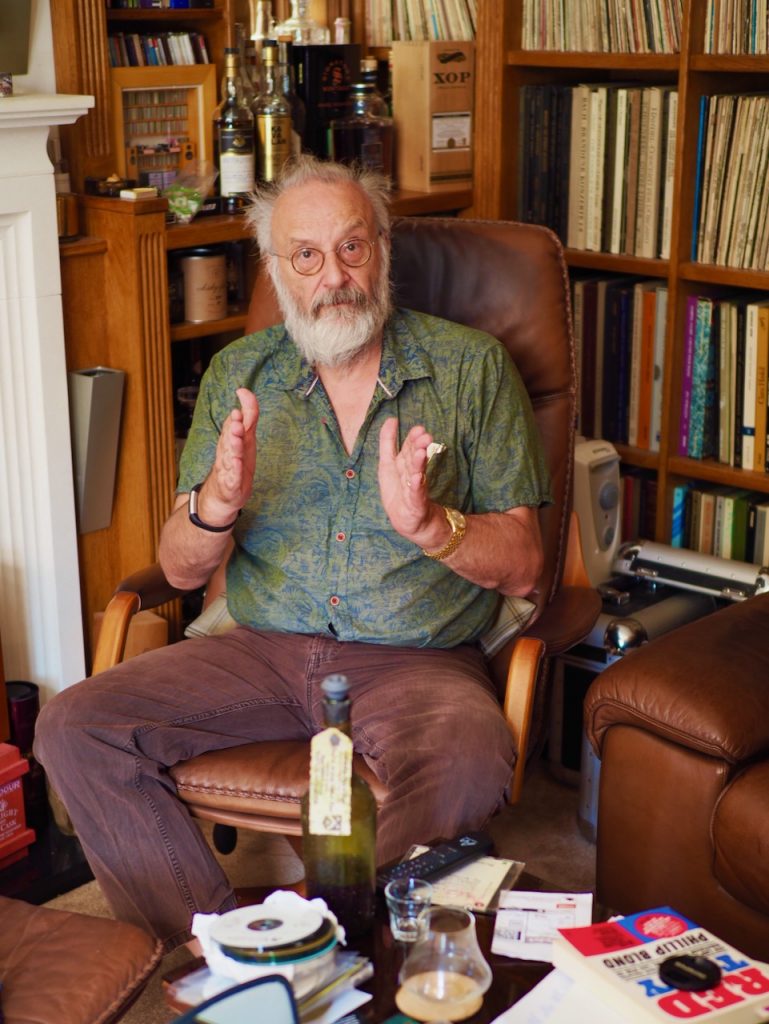
Peter Qvortrup (Audio Note (UK)) in his home listening room.
Speaking of system voicing, my whole world of listening to music on a high-fidelity system has been permanently altered by Peter Qvortrup of Audio Note (UK).
Visiting Peter in Brighton, England, and hearing Peter play transfers to digital from 78 records on his home system altered my world view of what is important to me in high-fidelity audio.
That experience with Peter was my own personal "shot heard round the world" for music listening.
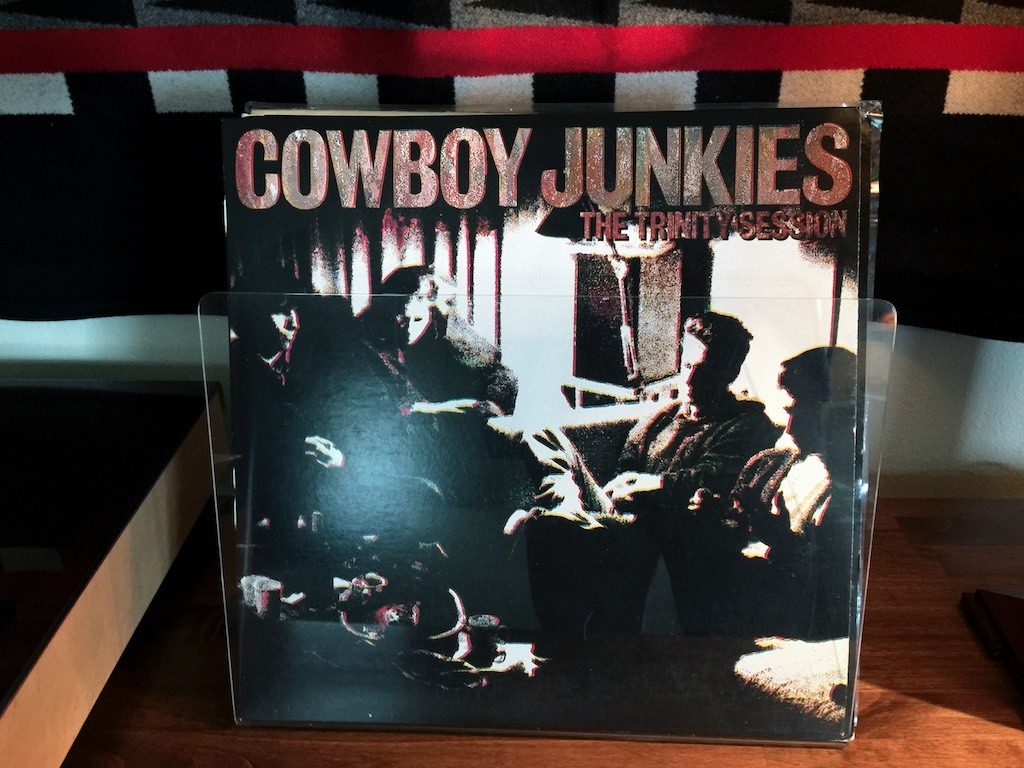
Cowboy Junkies, The Trinity Session. An exceptional recording of great music.
I had fallen into the usual audiophile trap of focusing on albums with the best sound quality, and voicing my audio system with those albums.
What I realize now is that while using some of the best recordings for system voicing can be useful, its a recipe for disaster for long-term listening satisfaction if all you use for voicing is audiophile-style albums.
What happened when I used only audiophile-style albums for system voicing was that I got great performance from a handful of albums that I used for voicing, and pretty much everything else I listened to sounded like crap.
That's way too limiting from a musical perspective, and it took me way too long to realize that.
Fortunately, visiting with Peter provided me an alternate model for system voicing, which if I remember correctly, Peter refers to as the "comparison by contrast" method.
What that method means for voicing, is that I randomly pick out various albums that span our recorded music canon, and voice whatever audio system I have setup at the moment, so it has the broadest performance range possible for playing back recordings of various recording quality from the four eras of recording in a musically enjoyable high-fidelity fashion.
The end result is a system voicing that makes great recordings sound phenomenal, and vintage - or not so great recordings - sound musically engaging, while still allowing for the appreciation of how the recording arts have evolved over time.
The upside is that I can now listening to any example of music from any of the four eras of the recording arts and get 'goosebumps' listening experiences every time.
Why is that such a big deal?
Well for one, it has shown me how incredibly good my Westminsters can be playing any music I feel like listening to.
Secondly, it got me out of the habit of listening to audiophile 'warhorse' albums, and I started listening to albums primarily for the quality of their musical performances, rather than primarily for their sound quality, like audiophiles often do.
There's many magnificent musical performances from the the acoustic (1877–1925) and electrical (1925-1945) eras of the recording arts, as well as the later magnetic (1945-1975) and digital (1975 to present) eras of the recording arts, and the albums popular with audiophiles represent only a tiny fraction of the great musical performances that live within our historic recorded music canon.
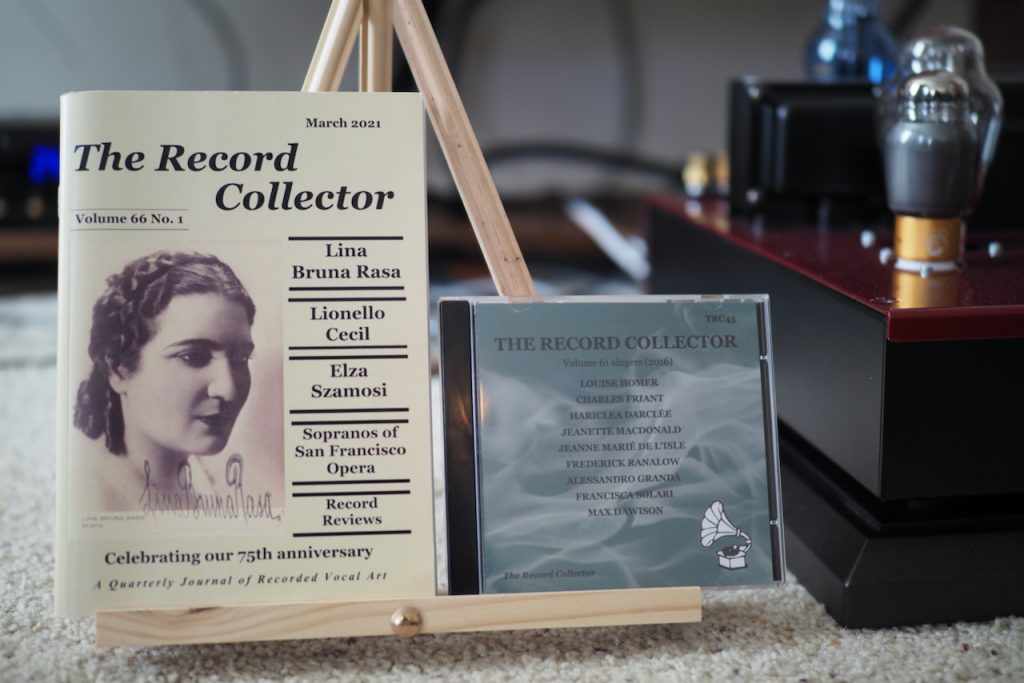
The Record Collector - "A Quarterly Journal of Recorded Vocal Art".
Also, it has opened up a whole new world of music listening for me that has revitalized my passion for music and high-fidelity audio.
Take for example, "Volume 61 singers (2016)" from The Record Collector (above), an enthusiast journal for recorded vocal art.
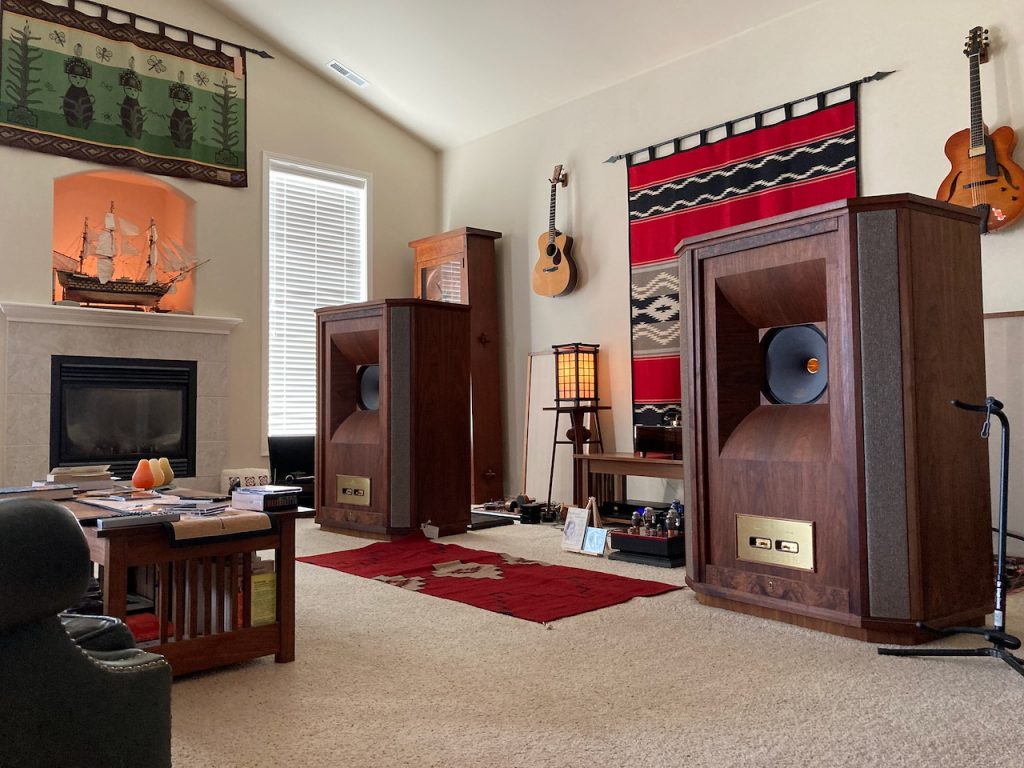
I was listening to Volume 61 last night and was absolutely blown away at the quality of the vocal performances from these early recordings of the vocal arts.
I don't know if you've heard of Louise Homer, Charles Friant, Hariclea Darclee, Jeanette Macdonald, Jeanne Marie De L'Isle, Frederick Ranalow, Alessandro Granda, Francisca Solari, or Max Dawison, but they are brilliant, and quite a number of these recordings have never been reissued before.
Thank goodness for The Record Collector for searching out these great vocalists from our recorded music canon and putting them out on CD for us to enjoy today.
I might add that another major realization of mine is how important it is to have a quality CD player that gets the music right, like the Audio Note (UK) CD 2.1x/II 'Level Two' Red Book CD player (more HERE), so you can listen to all these digital transfers from bygone eras.

Triode Lab 45 EVO integrated amplifier. 2 watts of 45 magic!
Last night I was listening to a simple but extremely high-fidelity audio system, consisting of my Westminsters, the Triode Lab 45 EVO integrated amplifier (more HERE), and the Audio Note (UK) CD 2.1x/II 'Level Two' Red Book CD player.
This combination of audio equipment - voiced with various Duelund interconnects & speaker cables and Acoustic Revive power cords - absolutely blew me away with how well it handled any recordings I chose to play.
Honestly, I've never heard my Westminsters sound so good, and my appreciation for the West's abilities are at an all time high.
Whether I'm listening to the artfulness of how well the Tannoy Westminster Royal SE loudspeakers provide an 'authentic' listening experience from recordings from any era of the recording arts, or how faithfully they portray the magnificence of the great musical performances of the past, or deliver the stunning recording quality of audiophile favorites, the Westminsters do it all exceptionally well.
Very, very, highly recommended.
What if you can't afford $50,000 USD for a new pair of Tannoy Westminster Royal GR-OW loudspeakers?
Well, the Tannoy Westminster Royal SE loudspeakers are fantastic, and you can find them occasionally in the used marketplace for around $15,000 USD, which is a remarkably good buy for such great loudspeakers.
Ok, that's all for now.
Oh ... I almost forgot ... my amplifier marathon will continue as I transition from the superb Pass Labs and First Watt solid-state amplifiers to various exotic vacuum tube amplifiers in preparation for my upcoming review for Positive Feedback of the beautiful little Leben CS-300F vacuum tube integrated amplifier (more HERE).
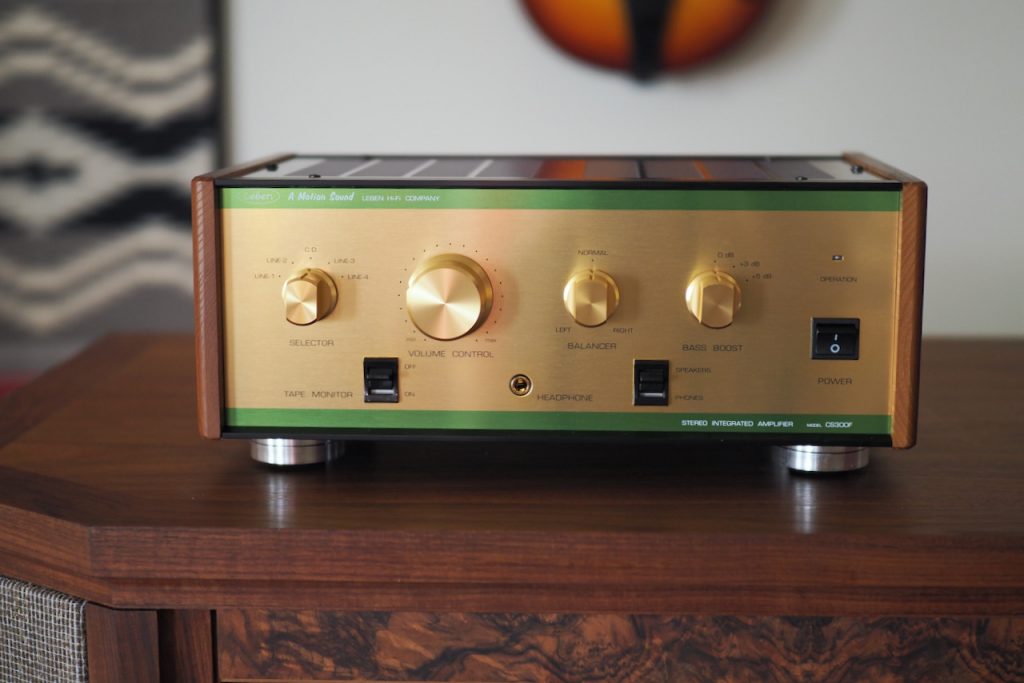
Leben CS-300F.
I'm listening to the glorious Triode Lab 45 EVO integrated amplifier now, which has become my benchmark for comparison for vacuum tube amplification performance. It is simply stunning both musically and sonically.
I'll be switching over to my Leben CS-600 vacuum tube integrated amplifier for a long-term report on it in the near future - I've had the CS-600 even longer than my Westminsters! I'll have to look up when I got the CS-600, but its definitely been over 12 years, and it is still going strong!
As always, thanks for stopping by and may the tone be with you!





























